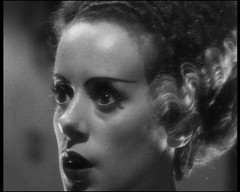Voodoo Histories is a long overdue scholarly yet entertaining rational study on the history of the 20th and 21st century's rising interest in conspiracy theory. He looks at its uses in propaganda and its emergence as pop history phenomenon. A common myth among conspiricists is that conspiracy theories are often anti-right wing, but as David Aaronovitch points out, they have no political preference. There have been very popular left and right wing conspiracy theories propagated over time.
Beginning with the fictional Protocols of the Elders of Zion, Aaronovitch shows how a proven piece of 19th century anti-Semitic propaganda, undeniably plagiarized from a French satire on Napoleon III, wove its way into global consciousness. It was endorsed by people such as Henry Ford, then used by Adolph Hitler and finally found its way into the 9/11 conspiracy theories and the
After the Protocols there was Stalin’s use of conspiracy theory to back up the infamous show trials that saw the extermination of his last rival for power in Soviet Russia. Aaronovitch carefully argues the model of paranoia found in totalitarian despots like Stalin and his Chinese counterpart Mao or Cambodian one, Pol Pot, would be replicated by many individuals who bought into conspiracy theory then and buy into it today.
Next there was the persistent belief that
Aaronovitch is a thorough author who has far from a pro-establishment background and acknowledges its equally destructive other extreme, contingency theory. His work here not shows us that although often thought as fun as other forms of urban legend, there are real dangers in unfounded conspiracy theory. This danger is indicated in the growing trust in unsupported claims and ideas by many people in the media eye, including prominent politicians. He nicely defines what is meant by a conspiracy theory, as a type of reverse Occam’s Razor. Rather than opting for the solution that requires the least number of assumptions, the conspiricist goes for the solution that has the least amount of probability and requires faith over evidence.
If you enjoyed this review please show your appreciation by voting for it on
Doyoo
Ciao
Don't forget to check out Jamie Clubb's main blog www.jamieclubb.blogspot.com

![Reblog this post [with Zemanta]](http://img.zemanta.com/reblog_e.png?x-id=1fbcb07e-5fab-4ce1-b8e0-734b1f255763)

![Reblog this post [with Zemanta]](http://img.zemanta.com/reblog_e.png?x-id=883996ae-96ed-4a93-8a70-11dae61e7379)